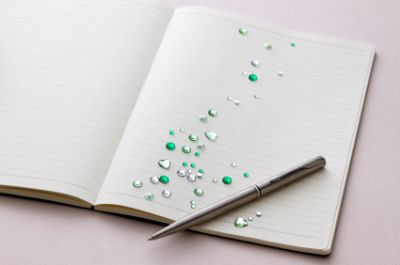Query letters: They’re sort of my thing.
While many of my coaching clients seem to agonize over their query letters, perfectionism and fear keeping them from ever sending the damn things out, I actually enjoy writing them.
This nerd-tastic enjoyment is mostly thanks to some pretty fantastic teachers. Back in college, I took a professional writing class with Burton Klein, an adjunct professor at TCNJ who taught his students how to write cover letters that stood out. Later on, I took several continuing education classes with Susan Shapiro. She taught me everything I know about establishing a connection with editors.
Now, I’m someone who — according to my friends — “gives good email.”
Thank god. I’m pretty hopeless when it comes to in-person interaction.
I even offer a coaching package for those seeking out help with query letters in particular: Cover Letters: Quick, Easy & Awesome.
In the past, I’ve blogged about the basics of query letters: 1. Establish a connection. 2. Lay out your idea. 3. Sell yourself. 4. Wrap it all up. But is it really so simple?
Yes… and no.
To really set yourself apart, you should be adding in some extras.
Link to a study. It’s just good common sense to include a news hook with your query. It shows an editor why your piece is relevant now. Your newsy connection can be as simple as celebrity goings-on, or forthcoming movies and books. But that’s what everybody is doing. Show an editor you’re really plugged into what’s going on by showing her a study she hasn’t seen before. I keep up to date on scientific studies by receiving press releases from SourceWire, setting up Google Alerts, and subscribing to newsletters from my favorite sexual health organizations. How can you plug into your niche?
Pinpoint a section of the magazine. When you draw up your query letter, show your familiarity with the publication by pointing out which section your piece might be a good fit for.
Suggest a sidebar… or other nifty feature. When I’m doing my initial market research, not only do I make note of a publication’s sections, but I also pay attention to any extras they tend to include alongside their articles: sidebars, graphics (pie charts, time lines, etc.), quizzes… Then I brainstorm similar features that would pair well with the story I’m pitching. Not only does this show your familiarity with the publication, but it also makes the editor’s job easier! Editors love writers who make their job easier. 😉
Line up your experts before you get the assignment. Â Most editors prefer to supplement their service content with expert advice. And personal essays? The market for them is shrinking, while reported essays have stepped in to take their place. Show an editor your story has legs by listing the experts who are already willing to give you quotes.
Offer up your photography (or other multimedia) services. Do you have experience with professional photography / photojournalism? That’s an extra an editor may jump at. Ditto for illustration, video, and podcasting skillz. Â In an increasingly visual — and online — world, the more multi-talented you are, the more attractive you are. Readers love a good slideshow or infographic!
Assure the editor you’re not a one-trick pony. In addition to your main story idea, consider including teasers to some other ideas you have on tap. While some editors do assign out stories to the writers they love the most, it’s easier to establish that mutually beneficial relationship if you can first show an editor you’re creative enough to generate a multitude of story ideas on your own.
Convince an editor you’re the best one for the job. Sure, you can include a link to your online portfolio. But why make an editor work for it? In addition to that primary link, include one or two links to stories you’ve written that are especially relevant to the one you’ve just pitched.
Finally, instead of thinking of the items above as extras, tell yourself they’re not optional. The stronger your query letter is at the outset, the more likely you are to hear back.
Any other, successful ways you’ve “bedazzled” your own query letters?
Related: How to Pitch: The Basics


Awesome tips!! Thank you!! Today’s goal is to send out a bedazzled query! Thanks for the pitch-aspiration!